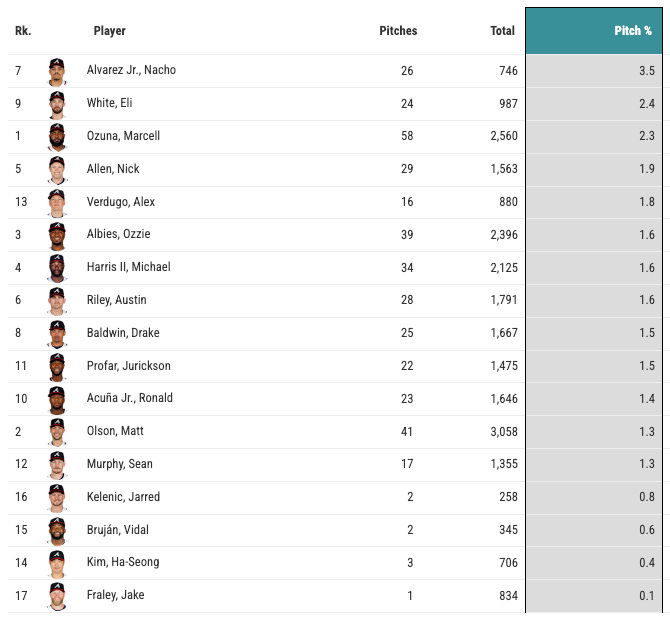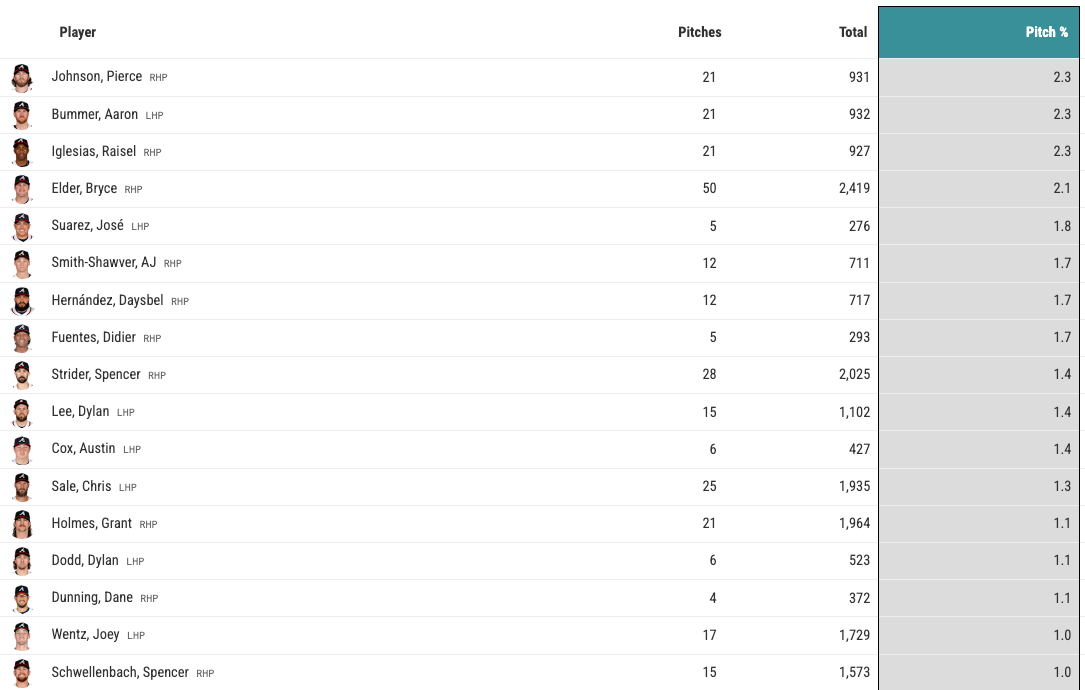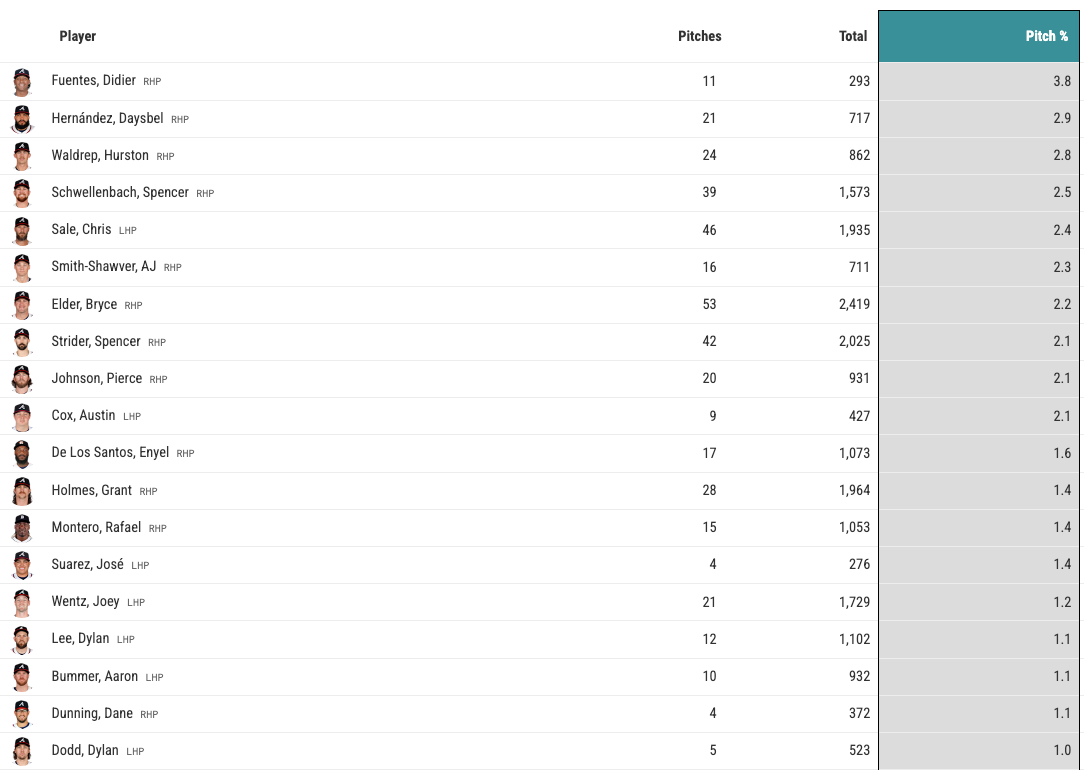Which Braves Players Stand to Benefit, and Lose, By MLB's New ABS Challenge System?
Now that balls and strikes can be challenged next season, things might get tougher for Atlanta's relievers but easier for the starters
Major League Baseball announced on Tuesday that starting in 2026, the Automated Ball-Strike Challenge system would be coming to the majors. Each team would be provided with two challenges per game, usable by pitchers, catchers, or batters to challenge what they think is an incorrect call on a ball or a strike. If you’re right, the call is overturned and your team retains a challenge. If you’re wrong, the call stands and your team loses one challenge.
It is a system that’s been in place for several seasons in Triple-A; here’s current Braves catcher Drake Baldwin, batting in a one-run game in the tenth inning, overturning an inning-ending strikeout into a walk to load the bases back in 2024:
Gwinnett would go on to win this game, 3-2, after the next batter (Yuli Gurriel) hit a two-run single to left for the walkoff.
While the Braves finished 13th in overall positive impact from missed calls in
’s calculations, as measured by the net when batting minus the net when pitching, several Braves hitters were more prone to get hosed by a bad call and multiple pitchers were particularly unlucky when it came to not getting calls in their favor.Which Braves players stand to benefit the most from the ABS Challenge system in 2026? Let’s talk about it.
Why hitters win under ABS
Both the numbers and the anecdotal evidence favor position players over pitchers under the ABS Challenge system. As you saw from the chart above, only three teams’ pitchers received more outside strike calls than inside ball calls, while every single major league team’s bats received more inside ball calls than outside strikes.
Player testimony leans the same way. Per Baseball America’s J.J. Cooper, several Triple-A pitchers told him directly that hitters are less likely to chase under a challenge system. “My first outing in Triple-A, I noticed right away how much more patient hitters were,” one such pitcher told Baseball America. “I was throwing pitches just off the plate that normally get swings, and here they were taking them.”
While it stands to reason that higher-level hitters might be more patient than their younger counterparts, the pitcher acknowledged that he ultimately learned he needed to adjust to get swing and miss. “I’d come into the dugout asking where that pitch was, and sure enough, it was a ball. That made me realize I had to be better. I don’t know if it was the jump from Double-A to Triple-A or just the quality of hitters, but you quickly figure out you’ve got to go for in-zone whiffs instead of just chases, because these hitters know the zone so well.”
And most notably, the public corrections have already pushed umpires to call a tighter zone. “The zone in Triple-A is actually smaller than in the big leagues, so the mentality has to be filling it up and still finding swing-and-miss,” added that same Triple-A pitcher to Baseball America.
When looking at pitches in the “shadow”, an area defined as a ball width on each side of the edge of the plate, the three-year average for shadow pitches that are called strikes has been as high as 46.4% in the major leagues in the last few seasons. In Triple-A, the only full level with available Statcast data, it’s been roughly around 44% for the three years the challenge system has been partially or fully implemented.
Which Braves hitters should benefit?
From a sheer number of missed calls against him, no Brave stands to see more of a boost than The Big Bear himself, Marcell Ozuna1. Atlanta’s designated hitter has seen 59 pitches outside of the strike zone called strikes this season, a top-six mark in the league. It’s a combination of some bad luck combined with more opportunity - Marcell’s swing rate of 39.4% was the lowest of any qualified regular on the team.
But when you examine the list of who was victimized the most by outside strikes (minimum 250 pitches seen) by percentage rather than sheer rate, it’s a combo of a bunch of lesser tenured players and..Marcell Ozuna.
Here’s a list, sorted by total percentage of pitches seen that were outside strikes, for everyone on Atlanta’s roster through Tuesday evening:
Something something veteran privilege, right?
Coincidentally, when you look at swing percentage, there’s quite a bit of overlap here. Nacho is barely ahead of Ozuna in swing percentage at 42.7% and beats him here on the rate of balls called as strikes.
So, one conclusion I feel comfortable stating:
Players with lower swing percentages could benefit more from the ABS challenge system.
If you think about why a hitter swings less - usually a better understanding of the strike zone - then this makes sense.
The counterpoint of this is the dynamic in the clubhouse that arises from the ABS Challenge’s addition to the game. We don’t yet know how teams will treat these challenges from a strategic standpoint: Will teams hoard challenges for late-game moments? Or will vets get priority over rookies? How do they get distributed between the offense and the pitching staff?
Overall, it feels like the players who will benefit more are the players with better strike zone awareness who are more selective in their swing decisions. For Atlanta, I’m looking at Nacho Alvarez Jr., Drake Baldwin, and Ha-Seong Kim (if he returns for 2026). Kim, in particular, has shown passivity overall (43.1% swing rate) with an absurdly low 23.3% O-Swing% (Out Of Zone Swing Rate) during his time with the Braves, holding the lowest O-Swing mark on the team among players with 15 games or more in Atlanta.
But there’s a flip side to this, as well.
Who wins and loses on the mound?
My initial thoughts going into this is that there’s going to be two buckets of pitchers here when looking at who the ABS Challenge system can impact: Those guys who have been unusually fortunate with pitches outside the strike zone being called strikes, and the starters who are focusing more on living “on the black” rather than trying to overpower hitters in the zone with pure stuff.
Let’s check it.
For Pitchers who benefit from generous strike calls, it’s a bunch of relievers and Bryce Elder.
Thinking about a reason for this, the first thing is the top of this list are arms that feature a carrying pitch with a bunch of movement in one direction (Pierce Johnson’s vertical breaking curveball, Aaron Bummer’s horizontal sweeper, Iggy’s horizontal movement on his changeup). Bryce Elder also makes an appearance, and he’s a guy that attempts to get swings down on his slider while also running his sinker horizontally out of the strike zone (that’s the goal, at least), so that tracks.
What about the second set, the guys who have had bad luck with pitches in the zone being called balls?
Yep, it’s a bunch of starters with good stuff (and Daysbel Hernández, which might be a subconscious “I’m not giving you that call; even you didn’t know where that was going” penalty on the part of the umpire).
Look again at the order at the top of the chart and let me give you the starter-filtered Stuff+ ranks, per FanGraphs (minimum two starts):
T-1: Spencer Schwellenbach & Didier Fuentes, 110
#3: Chris Sale, 107
#4: Hurston Waldrep, 103
#5: AJ Smith-Shawver, 98
That’s basically Atlanta’s entire wave of young arms and the reigning Cy Young winner, all with nasty stuff that sometimes fools umps as much as hitters. And if you think about it, you can identify what pitch is likely the culprit here for each pitcher, can’t you?
Splitter: Schwellenbach, Smith-Shawver, Waldrep
Sweeper: Fuentes
Slider: Sale
These guys feel like they’ll get a small boost from the ABS system, as long as the team has challenges available for them to use - remember, they’ll be the first pitcher out and we know from Triple-A’s three seasons of experience with the challenge system that teams don’t often get into their challenges in the early innings.
So who really wins here?
If you’re a Braves fan, the answer might be: everybody. Hitters who don’t chase (Nacho, Kim, Baldwin) are about to look even smarter, while pitchers with filthy stuff (Strider, Schwellenbach, Sale) should finally get rewarded for painting corners instead of being punished for fooling the ump. The ABS Challenge system won’t stop us from yelling at umpires, but come 2026, Atlanta may have a lot less to complain about.
Now, whether or not that boost is with Atlanta or someone else is an open question, one that’s likely not being decided until February, if I had to guess






Would Atlanta Braves Charlie Morton do better with this system? Also add in the ole 'hit the back foot for a bonus strike" call?
Interesting topic. Thanks for the good read.